"Painting is an argument between what it looks like and what it means" - Brett WhiteleyHaving been confounded by contemporary art in the Art Gallery of New South Wales, I reassured myself with work that I actually like. Each time I come to Australian art galleries I familiarise myself more with local artists, themes and styles. I have just included in this post some of my favourites.
Whiteley's return to Australia in 1969 heralded a new preoccupation with colour and beauty. Inspired principally by Matisse, but also by his house at Lavender Bay on Sydney Harbour's north shore, he created a series of large scale paintings of expansive interiors and views evoking the marine beauty of the harbour. I like this expansive blue canvas dotted with boats and the faint white line-drawing of the bridge.
 |
| The Balcony 2 (1975) by Brett Whiteley |
"Five bells was my first commission to paint in situ to cover a wall … I didn’t hesitate. I brushed a line around the core theme, the seed-burst, the life-burst, the sea-harbour, the source of life. Inside and around this core, I painted images drawn from metaphors and similes in [Kenneth] Slessor’s poem of our harbour city, and from my own emotional and physical involvement with the harbour, and with my young family in Watsons Bay …I wanted to show the Harbour as a movement, a sea suck, and the sound of the water as though I am part of the sea ... The painting says directly what I wanted to say: ‘I am in the sea-harbour, and the sea-harbour is in me’." - John Olsen
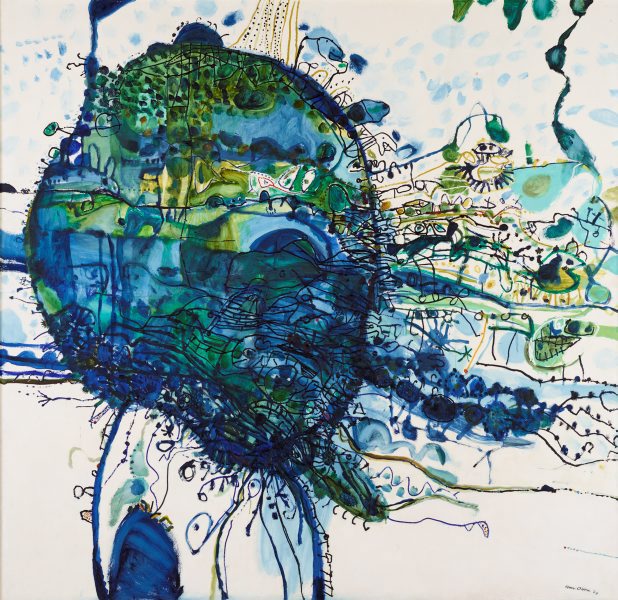 |
| Five bells (1963) - John Olsen |
John Brack uses repeated angular forms for his painting of a woman mid-conversation. Communication is usually a positive thing but in this sepia tinted rendition it is strained and isolating. The viewer, positioned as a direct and close observer, is drawn into the stark geometry of the composition.
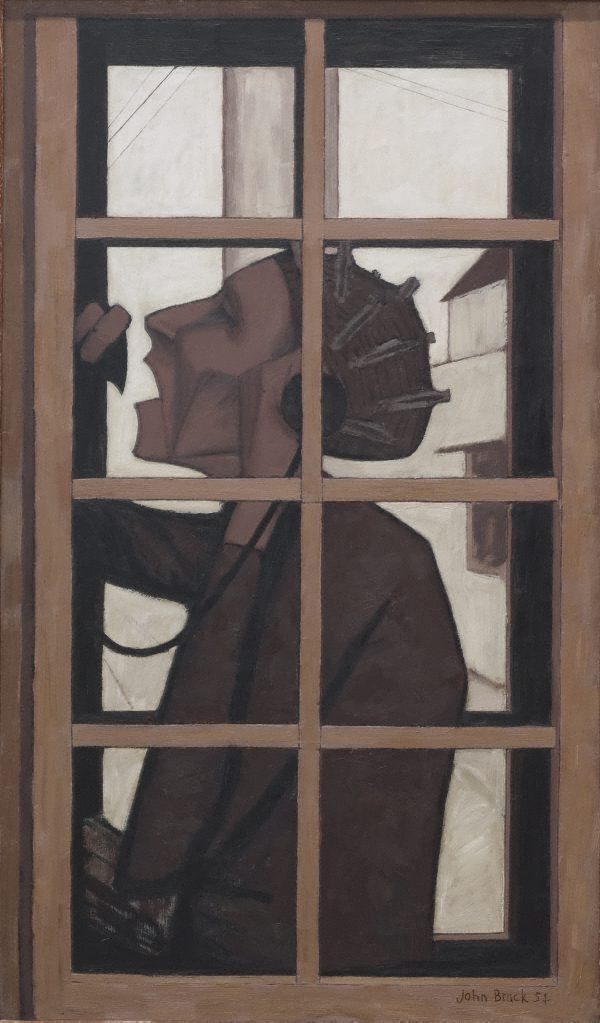 |
| The Telephone Box (1954) by John Brack |
 |
| Nebuchadnezzar on fire falling over a waterfall (1966-68) by Arthur Boyd |
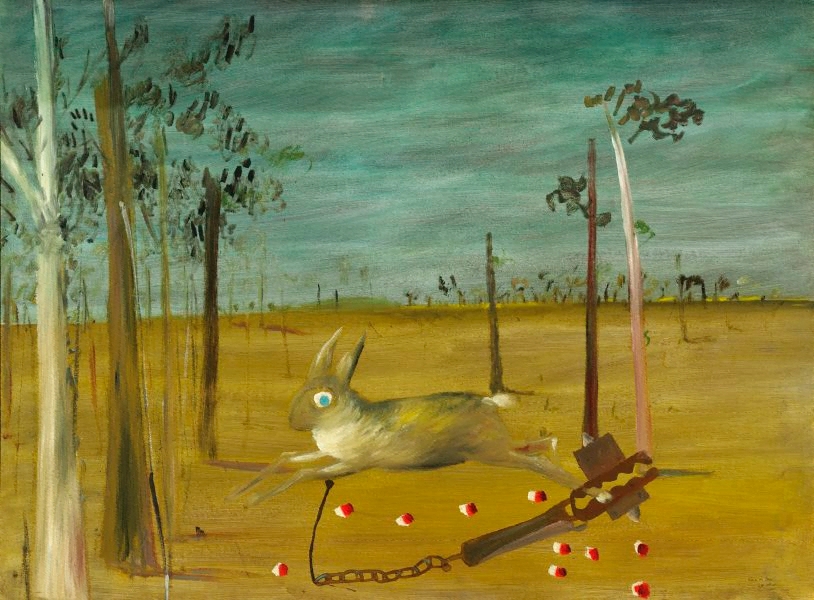 |
| Hare in Trap (1946) - Sidney Nolan |
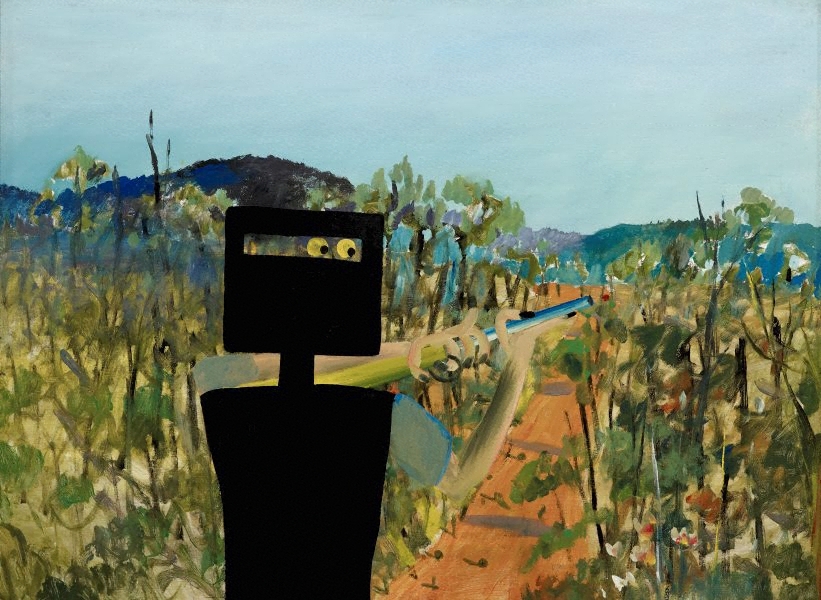 |
| First-class marksman (1946) - Sidney Nolan |
 |
| Apocalyptic horse (1956) - Albert Tucker |
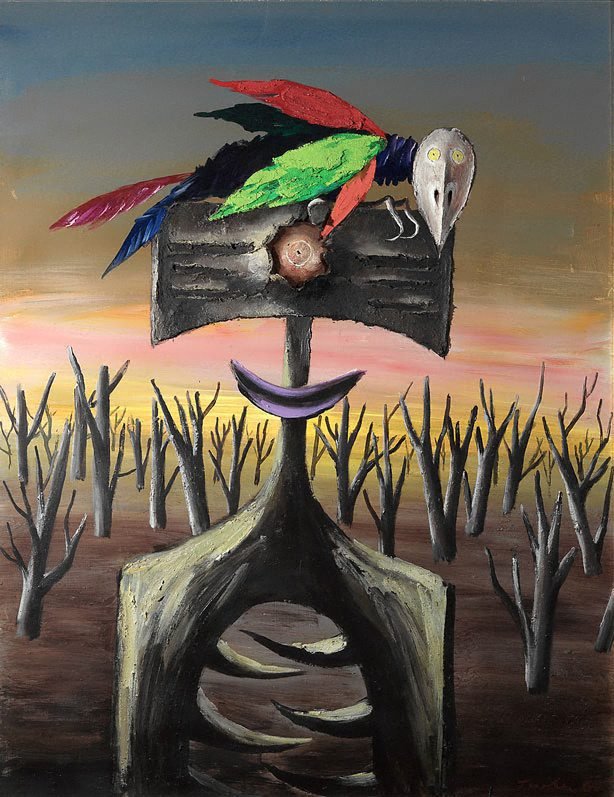 |
| Faun attacked by parrot 3 (1968) - Albert Tucker |
No comments:
Post a Comment